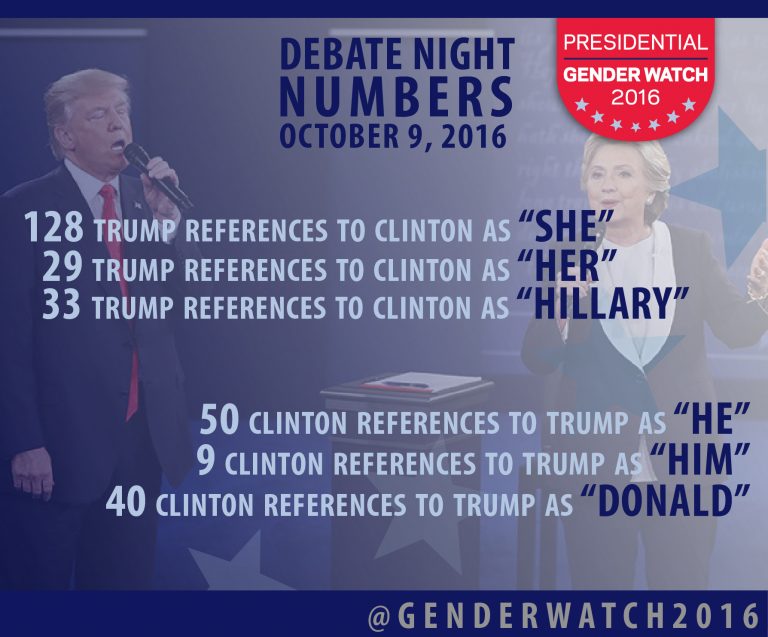The Politics of “She”
 In April 2015, the Barbara Lee Family Foundation (BLFF) and the Center for American Women and Politics (CAWP) launched Presidential Gender Watch 2016, a project to track, analyze, and illuminate gender dynamics in the 2016 presidential election. With the help of expert scholars and practitioners, Presidential Gender Watch worked for 21 months to further public understanding of how gender influences candidate strategy, voter engagement and expectations, media coverage, and electoral outcomes in campaigns for the nation’s highest executive office. The blog below was written for Presidential Gender Watch 2016, as part of our collective effort to raise questions, suggest answers, and complicate popular discussions about gender’s role in the presidential race.
In April 2015, the Barbara Lee Family Foundation (BLFF) and the Center for American Women and Politics (CAWP) launched Presidential Gender Watch 2016, a project to track, analyze, and illuminate gender dynamics in the 2016 presidential election. With the help of expert scholars and practitioners, Presidential Gender Watch worked for 21 months to further public understanding of how gender influences candidate strategy, voter engagement and expectations, media coverage, and electoral outcomes in campaigns for the nation’s highest executive office. The blog below was written for Presidential Gender Watch 2016, as part of our collective effort to raise questions, suggest answers, and complicate popular discussions about gender’s role in the presidential race.
During Sunday night’s presidential debate, you may have noticed a stylistic – and perhaps strategic – difference between the nominees on stage in how they referred to each other. Previous analysis and commentary has focused on whether or not a candidate refers to their debate opponent by title and surname or first name alone, assuming the former is an indicator of respect. This has led to memorable moments like Governor Sarah Palin’s “Can I call you Joe?” request at the start of the 2008 vice presidential debate. But on Sunday, instead of counting references by first or surnames, the more distinctive strategy was whether the candidate used their opponent’s name at all. Just as taking away a person’s title can strip them of the credentials it represents, repeatedly referring to them by pronoun rather than name works to strip them of their identity. And when done in the presence of that person, the choice seems both purposeful and disrespectful.
On Sunday night, Donald Trump referred to Hillary Clinton as “she” 128 times. When we removed follow-up references, where he first called her by name and then used “she” in the same for following sentence, the number drops to 109. Hillary Clinton, on the other hand, referred to Donald Trump as “he” 50 times, dropping to just 28 times once follow-up references were removed. Clinton referred to Trump as “Donald” 40 times, and Trump called Clinton by (first) name 33 times. Unlike the first debate, where Donald Trump started by asking if “Secretary Clinton” was “okay,” he never referred to Clinton by title (Secretary or Senator) in the second presidential debate. Together, the data shows that Trump spent more time talking about Clinton than Clinton spent talking about Trump, but was less likely than Clinton to refer to his opponent by name.

Was Trump’s choice strategic? Only he and his team really know. But, as Dr. Erin Cassese wrote on Monday, “This verbal tactic was likely intended to minimize Clinton’s legitimacy and identity, by neglecting to acknowledge her title, experience, or even her name.” Linguistics professor Deborah Tannen called it the “demeaning hiss of ‘she,’” part of a sexist strategy employed throughout the debate. Just as naming – whether a person or a problem – is often empowering, refusing to identify an individual or issue by name denies or diminishes its existence. The person who decides whether or not, and when, to name is in a position of power. Trump and Clinton exercised that power differently in the latest debate.


